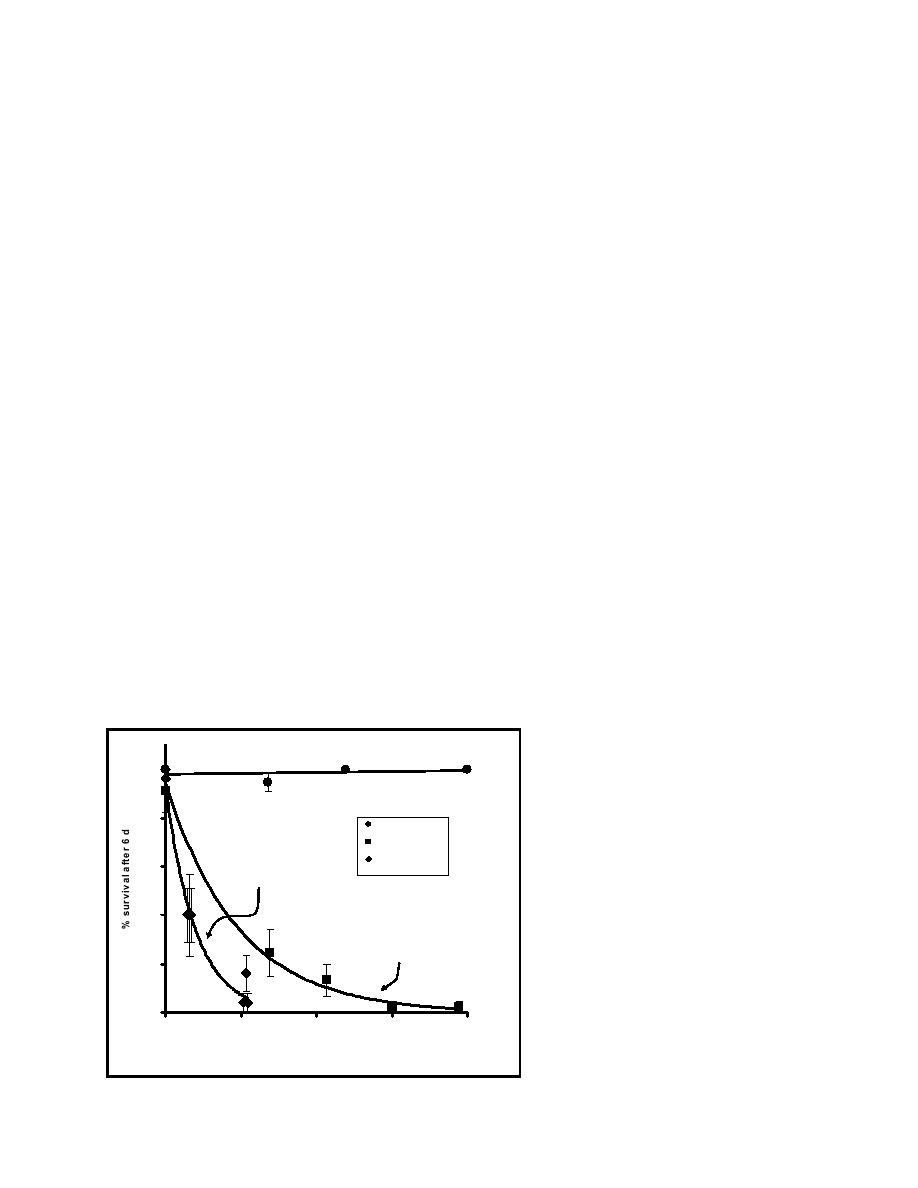 |
||
|
|
||
|
Page Title:
Figure 1. Percent survival of three benthic invertebrates to increasing overburden stress after 6 days of burial |
||
| |||||||||||||||
|
|
 ERDC TN-DOER-E19
March 2005
(Terrados et al. 1998). Effects of deposition may also be difficult to separate from associated
effects of increased sediment flux including light attenuation (Terrados et al. 1998).
Unfortunately, field assessments of effects of siltation or deposition on SAV in U.S. waters is
very limited.
Successful settlement of kelp and other algal species on hard bottom substrata is clearly inhibited
by very thin layers of sediment (0.008 mm). Fucus serratus embryos responded negatively to
thicker layers of sediment, with a stronger negative reaction to fine and organically enriched
sediments, and most strongly to the presence of sulfide (Chapman and Fletcher 2002).
Because SAV may have a very wide range of growth forms, sizes and phenotypic plasticity, the
effects of deposition could vary considerably depending on habitat, season, and water depth.
Deposition may affect growth and survival due to light limitation, accumulation of waste
products due to limited diffusion and sulfide poisoning depending on grain size, water content,
and organic content of sediments.
Methods for expressing levels of sedimentation (thickness, volume, dry/wt weight).
Measurements of sedimentation (i.e., bedded sediments) relevant to biological effects may
require several dimensional variables including thickness, density, percent fines, geometric mean
size, and Fredle number (Caux et al. 1997). Fredle number is an index of permeability that has
been correlated with survival to emergence of salmon and trout (Lotspeich and Everest 1981).
Hinchey et al. (in preparation) chose effective overburden stress (kPa: bulk density and depth of
burial as described in Richards et al. (1974) as a reliable measure of the force exerted on
organisms by sediment burial, because it combines burial thickness and porosity. Their
experiments with sediments from the Chesapeake Bay and York River were conducted to assess
survival at 6 days of burial for a range of overburden thickness (0-25 cm) representing
overburden stress from 0-16 kPa (Figure 1). Force may be most important to mobile organisms
attempting to escape from deposition events, but permeability may be more important to the
survival and growth of sessile organisms buried under very thin layers of sediment (<2 mm).
100
Figure 1.
Percent survival of three
80
benthic invertebrates to
Macoma
increasing overburden
Leptocheirus
y = 93.068e-0.6327x
stress after 6 days of
Streblospio
60
R2 = 0.8815
burial (from Hinchey
Expon. (Streblospio)
et al., in preparation)
Expon. (Leptocheirus)
Linear (Macoma)
40
y = 94.356e-0.26x
R2 = 0.9465
20
0
0.0
4.0
8.0
12.0
16.0
overburden stress (kPa) calculated at 24 hr
5
|
|
Privacy Statement - Press Release - Copyright Information. - Contact Us - Support Integrated Publishing |